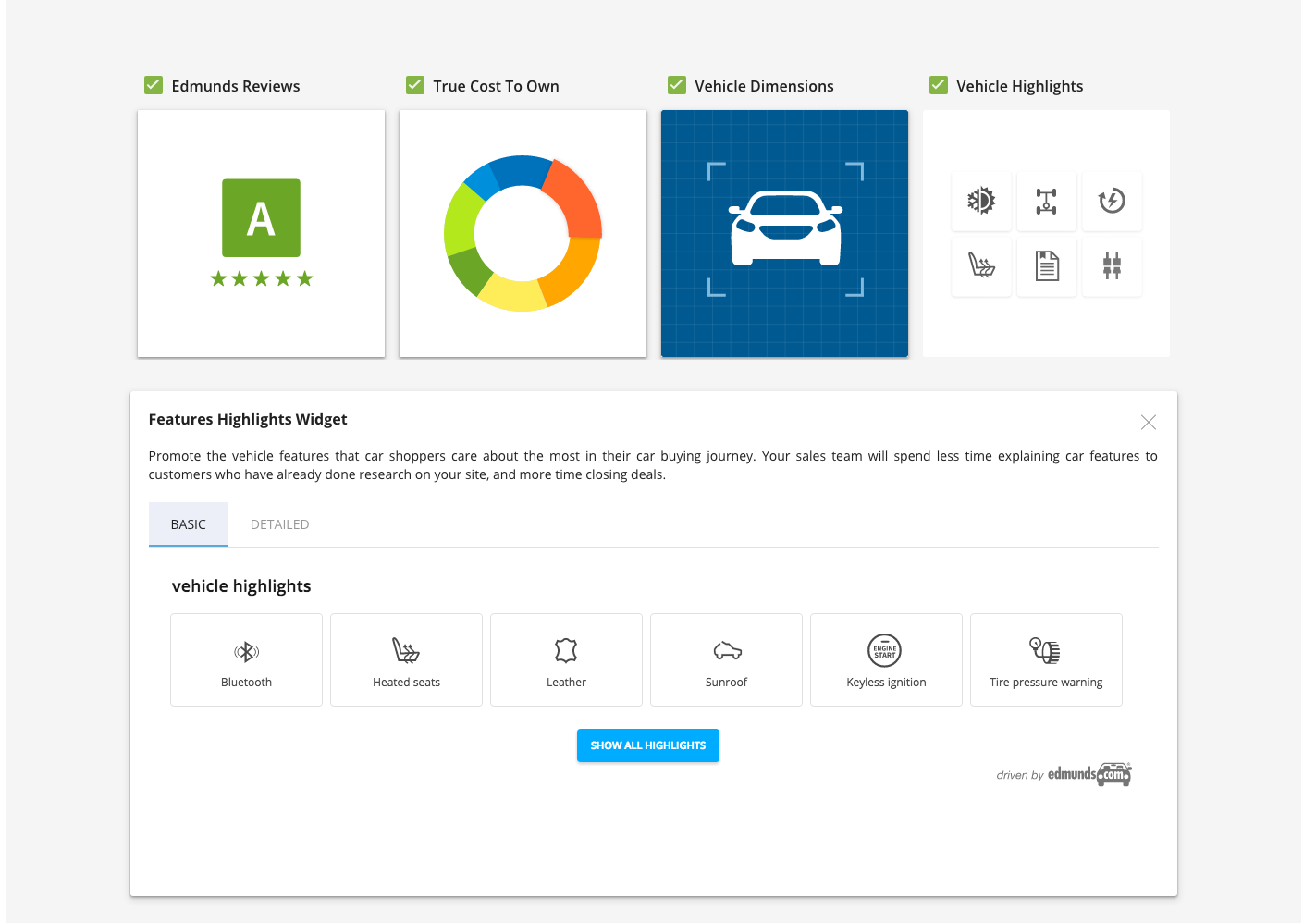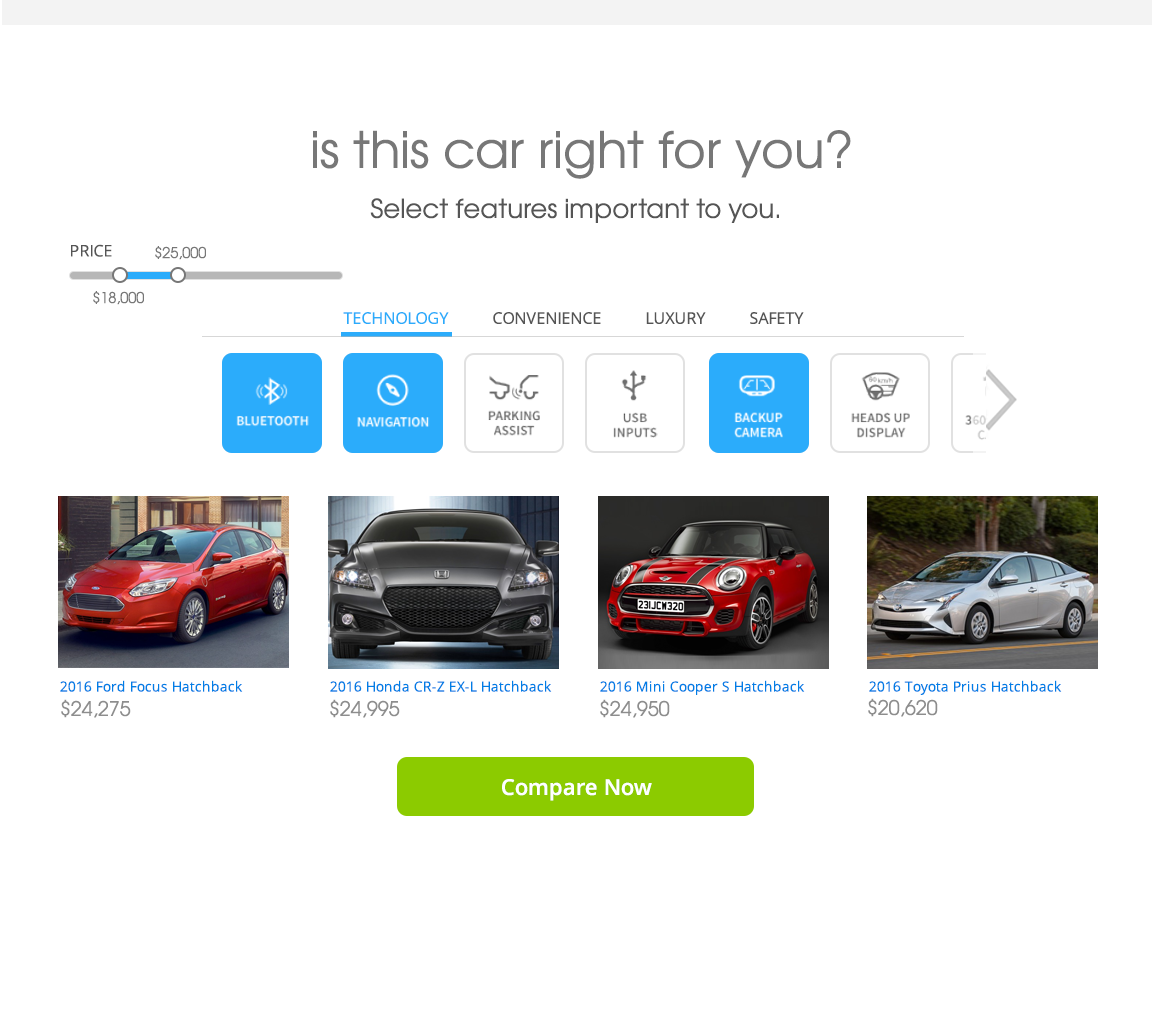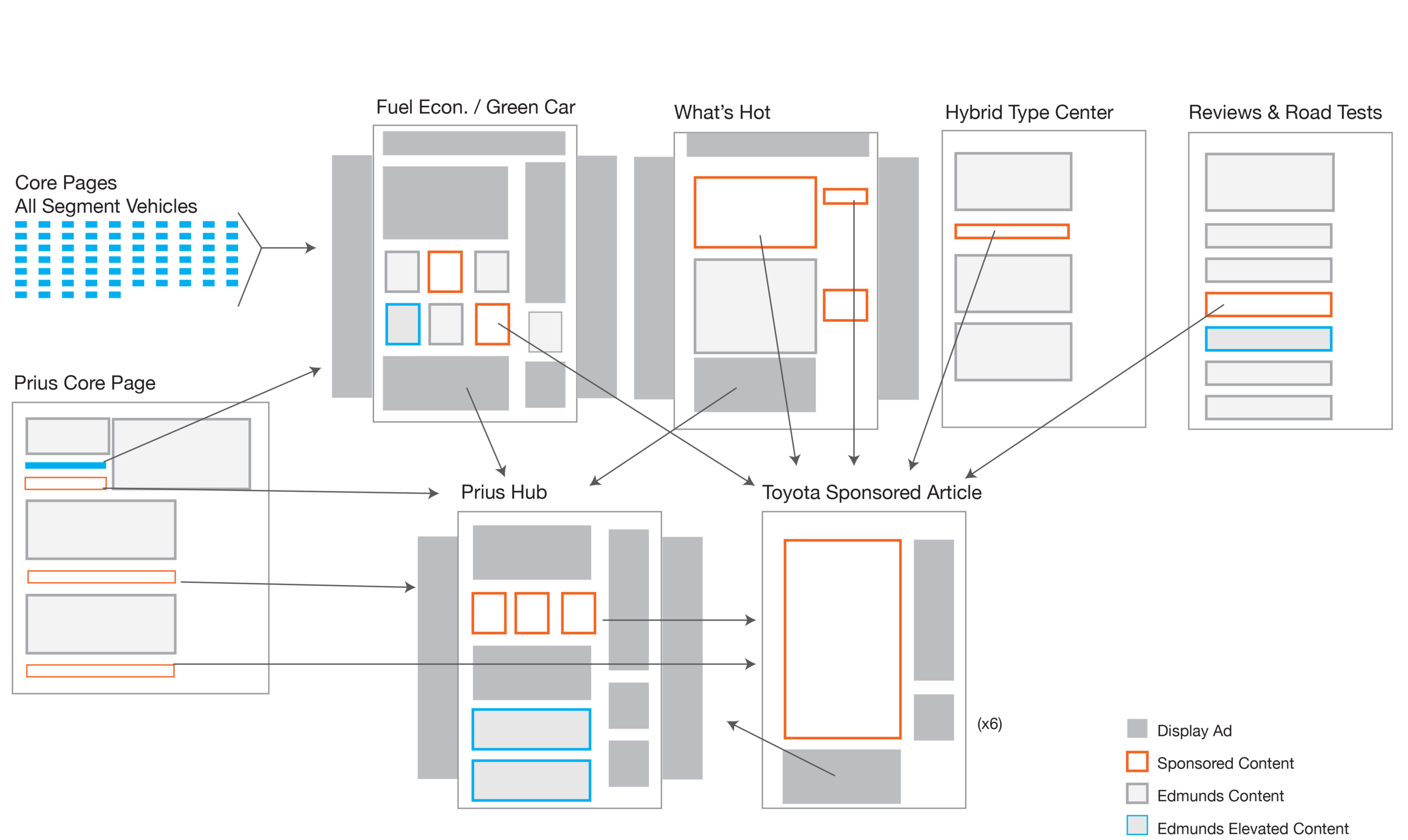process
1. Define Objectives
Understand business goals and desired outcomes.
ie: "Revenue growth depends on increasing the total number of unique visitors, the average number of page views and the time spent on-site by those visitor, and the proportion who ultimately lead conversions."
2. User Research
Interview multiple stakeholders. Understand the user journey & define natural journey pain points.
- What works about the current process?
- Define needs & understand problems and hurdles
ie: "As a shopper looking for a car it is difficult to understand what vehicle and/or which trim has the features and options, they find most valuable. Car shoppers don't want all the details when they're comparing multiple cars; instead, they're trying to decide which car to focus on first and are consequently more interested in just what makes a car different from the others."
3. Ideate / Prototype
Make assumptions and start designing. What works? What doesn’t? Where do problems arise?
4. Build Hypothesis
Isolate each design choice
Create an assumption & Hypothesis to test
Outline what we expect to happen
Outline what we want to learn
Consolidate into experiment rounds
Refine objectives
5. Test
Write story and requirements
GOAL: Include a carousel toward the bottom of the Core Page with vehicle alternatives [other models] that will reduce the bounce rate by re-engaging visitor who may have lost interest in the car on that core page
- Produce a funnel to inventory page with more focused listings, ultimately leading to lead submissions
- Allow visitors to eliminate confusion more efficiently / quickly find a car that interests them
- Gather user feature preferences explicitly
KPI’s:
Bounce Rate
Increased Lead submission (Conversion Rate)
Engagement / time on site / Click-thru-Rate (CTR)







